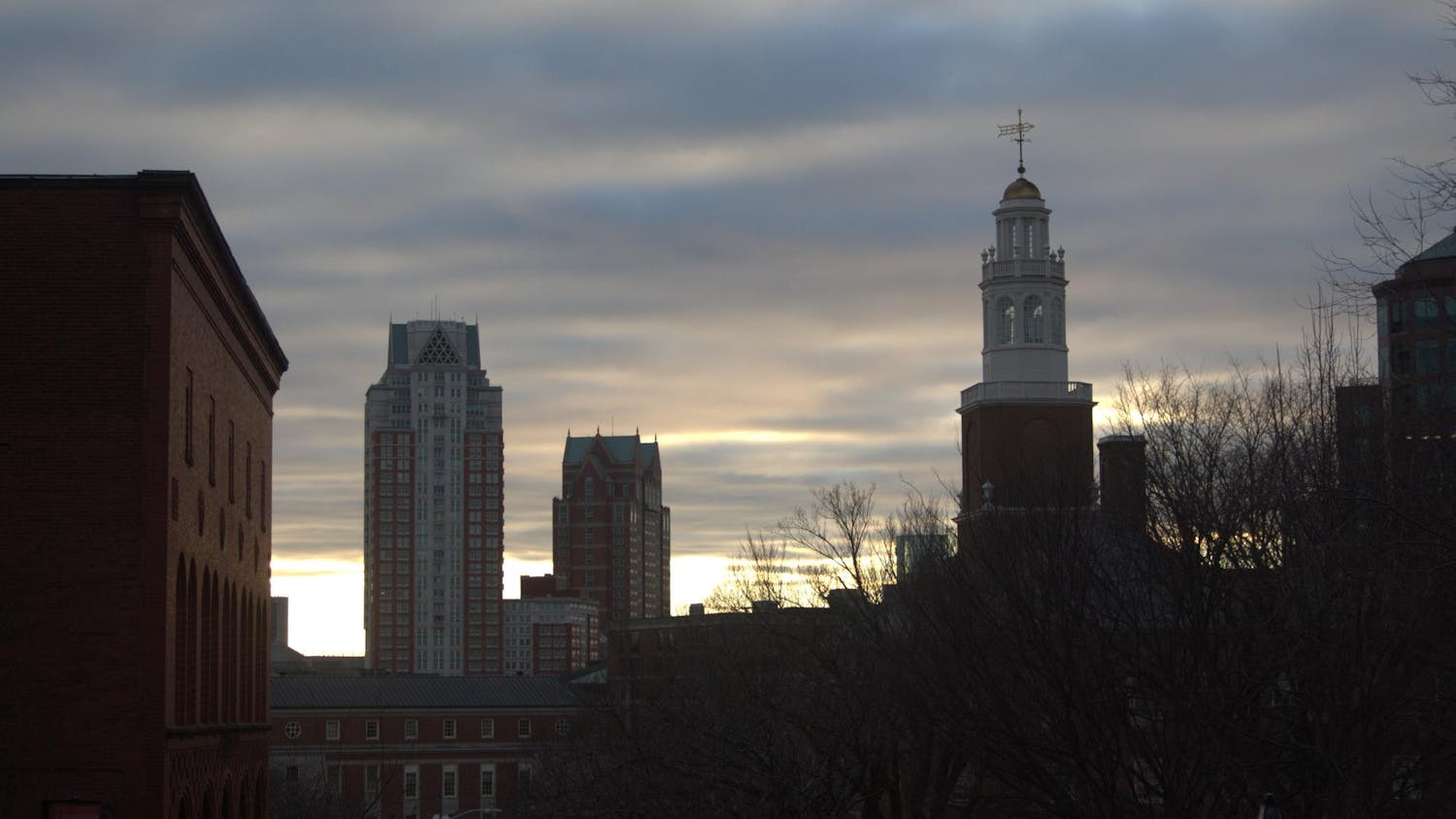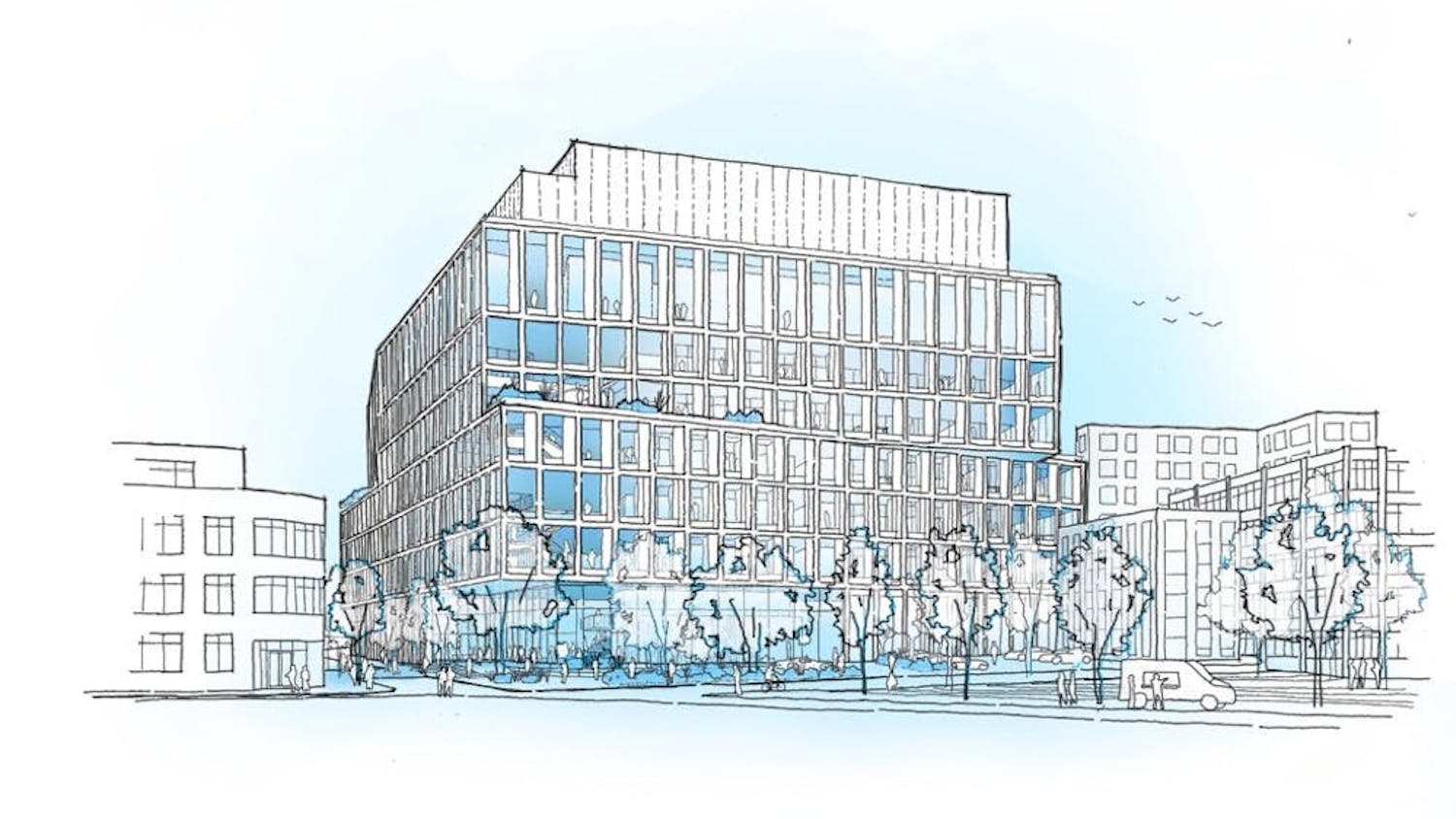West past Federal Hill lies a low-roofed two-story building with brick walls surrounded by wood-panel houses. In the afternoons, yellow buses line up as some children play on the swings or run around the playground. But not everyone leaves when the final class bell rings — some students stay to learn about topics such as art, sustainability and geology from groups of University students.
This scene unfolds daily at William D’Abate Elementary School, one of the highest-ranked elementary schools in the Providence Public School District and one of the few examples of success amid the devastating school conditions revealed by the Johns Hopkins report on Providence Public Schools.
The report, while shining light on the rampant deficiencies within the PPSD, cited “one elementary school that offers well-funded after-school programs, a ‘21st-Century grant,’ and volunteer students and faculty from a nearby university” as an example of “specific schools doing well.” While the report does not name specific schools, D’Abate Principal Brent Kerman, Senior Program Manager for Student Development Dilania Inoa and Assistant Dean of the College and Director of Student Development at the Swearer Center for Public Service Betsy Shimberg all said that this part of the report describes D’Abate and, among other programs, its partnership with the University through the Brown Elementary Afterschool Mentorship program.
The authors of the report and the elementary school evaluators did not respond to questions by press time to confirm that the report refers to D’Abate and the University.
The neighborhood of Olneyville, where D’Abate is located, is characterized by one of the highest poverty rates in Rhode Island, according to the Rhode Island Department of Health. According to Kerman, 94 percent of the students in the school qualify for free lunch. But despite the economic challenges its students face, the school consistently has top attendance rates and high standardized test scores when compared to other schools in the district, Kerman said.
Shimberg attributed the relative success of D’Abate to stable administrative leadership, dedicated faculty and an atmosphere that encourages learning. “It’s a culture of learning and growing and developing,” Shimberg said, with a “very positive ‘you can do this, we believe in you,’” atmosphere. “Maybe your zip code isn’t your destiny, and I think D’Abate proves that again and again.”
Shimberg also emphasized the benefits of the partnership between University students and D’Abate, which exists in large part through BEAM. More than 120 University students go to D’Abate each week as BEAM volunteers to lead after-school activities such as storytelling, art, geology and sustainability.
“I really love kids. My favorite thing is hanging out with them and hearing them tell me crazy stories and getting a window (into) the childhood imagination that I don’t feel like I have anymore,” said student volunteer Amelia Chalfant ’23. “I just love being around them, they have such good energy.”
According to research done by STATCOM, a group of Brown graduate students that collect data on the community, D’Abate students that took part in BEAM during the 2014-15 academic year scored 10 points higher in Math and 17 points higher in English than students who did not take part in BEAM.
According to Inoa, BEAM is the product of a nearly 20-year partnership with D’Abate. The partnership between the Swearer Center and D’Abate initially took the form of the Swearer Classroom Program, which provides assistance to teachers during the school day. That program continues today with about 75 University students split between D’Abate and William Fogarty Elementary School. Along with the Classroom Program, BEAM volunteers — and the signature t-shirts that they wear —have become staples at D’Abate.
“There is this belief that it takes a village to raise a child,” Kerman said. “We consider BEAM to be just another part of our village contributing to the positive growth of our kids. We see them as part of our family.”
As the state takes over Providence Public Schools to work toward improving learning outcomes across the city, the relationship between BEAM and D’Abate could serve as a model for other schools and universities in the area. But there are limits to replicating the exact dynamics between the groups at other locations in the city.
“We really need a school where there is a huge buy-in from the teachers and from the principal,” Shimberg said. “(Kerman) will tell you that when he came into the job eleven years ago and he talked to the teachers and said to the teachers what do you need, they said ‘keep the Brown program, whatever you do.’ And he did whatever he could, and there are many ways in which he steps in front and protects us. He really values the partnership.”
According to Shimberg, replicating BEAM’s success depends on school leadership and the allocation of financial resources. BEAM is funded by a 21st Century Community Learning Center federal grant that allows for one full-time and two part-time staff members to stay after school and oversee the program. Any decision to extend the program would require an increase in funding, Shimberg said.
Correction: A previous version of this article referenced Dilania Inoa as assistant dean of the college and senior program manager for Student Development. In fact, Inoa is not an assistant dean of the college. The article has been updated to reflect that change. The Herald regrets the error.





